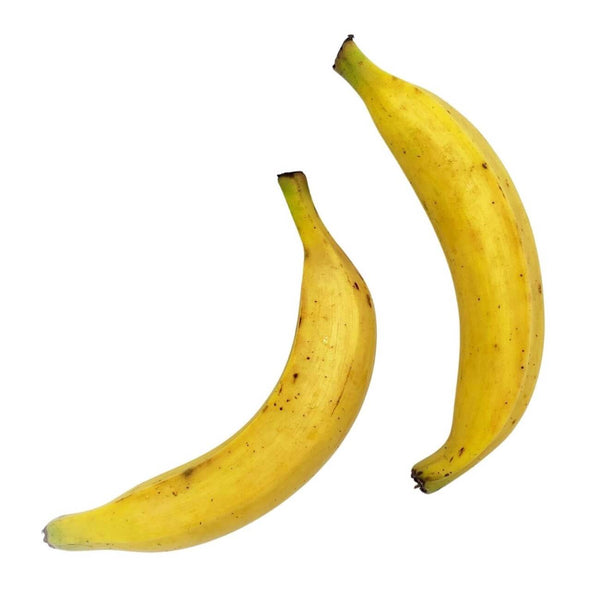
- ~40 lbs
- Yellow Plaintain aka "Ripe Plaintain", "Sweet Plantain", "Cooking Banana", "Shu-Huang-Jiao", "熟黄蕉", "熟黄蕉"
- Yellow plantain resembles a banana but is bigger and with thicker skin. Plantain can be eaten both ripe and unripe. Yellow plantain is ripe plantain. Yellow plantains are soft, starchy, and sweet. Common application includes sauteing, baking, and deep-frying. Yellow plantain is available year-round.
Handling Tip
Selection
- Yellow plantain has a uniform shape with no signs of bruises or gouges.
- Darker skin color indicates ripe, sweet yellow plantain.
- Avoid yellow plantain with black skin and mold around the stem end.
Storage
- Yellow plantain should be stored at 48ºF - 53ºF (9ºC - 12ºC) with a relative humidity of ninety to ninety-five percent and no mist. Yellow plantain should be kept to a minimum.
- The typical shelf life is up to one week. High humidity is important to minimize water loss and skin browning.
- Yellow plantain is sensitive to ethylene, a naturally occurring gas that regulates ripening. Yellow plantain should not be stored with high ethylene-producing products to extend shelf life and avoid over-ripening. Yellow plantain produces a high level of ethylene.
- Yellow plantain is sensitive to chilling injury after a few hours to a few days at 56ºF (13ºC) depending on maturity, condition of the fruit, and duration of exposure. Symptoms include brown or black streaks in a longitudinal cut on ripe fruit, failure to ripen, dark brown to black peel, and flesh turning brown and developing an off-taste. The chilling injury may not become apparent until eighteen to twenty-four hours after actual damage has occurred.
Recommended for the YELLOW PLANTAIN (PREORDER)
Product Title
Vendor
$19.99 | $24.99
Product Title
Vendor
$19.99 | $24.99
Product Title
Vendor
$19.99 | $24.99
Product Title
Vendor







